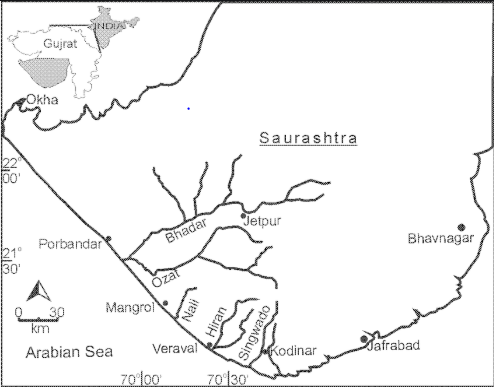Shetrunji and Bhadar Dams of Gujarat | 31 Aug 2020
Why in News
Due to heavy rains, Shetrunji and Bhadar dams, the two largest reservoirs in the Saurashtra region (Gujarat), have overflowed simultaneously.
- This monsoon, rain is centred over south Gujarat, Saurashtra and Kutch regions while north and central Gujarat regions are highly rain-deficient.
Key Points
- Saurashtra region has received more than 100% of its average rainfall this year.
- However, in this peninsular region, almost every fourth monsoon remains a deficient monsoon.
- Even within 11 districts of Saurashtra, spatial distribution of rainfall remains skewed, as evidenced by 12 different years in which either only Bhadar or Shetrunji dam overflowed.
- Shetrunji and Bhadar Dam:
- Shetrunji is located in Bhavnagar district and has a designed gross storage capacity of 308.68 million cubic metre (mcm), the largest in Saurashtra region.
- Bhadar is located in Rajkot district and has a gross storage capacity of 188.14 mcm, the second largest in the Saurashtra region.
- The two dams are across Shetrunji and Bhadar rivers. These rivers flow in opposite directions and the two dams have different catchment areas. Geographical location of these dams in Saurashtra makes them a good indicator of rainfall distribution in the region.
- Sardar Sarovar Dam, also called Narmada Dam, is the largest reservoir in Gujarat.
- Shetrunji River:
- It originates from the Amreli district. It is an east flowing river and outfalls into the Gulf of Khambhat.
- Tributaries: Safara, Shel, Khari, Talaji, Stali, Thebu, Gagadia, Rajwal and Kharo.
- Bhadar River:
- It originates from Jasdan taluka of Rajkot.
- Tributaries: Gondali, Chapparwadi, Phopal, Utawali, Moj, Venu, Vasavadi, Surwa and Galolia.

